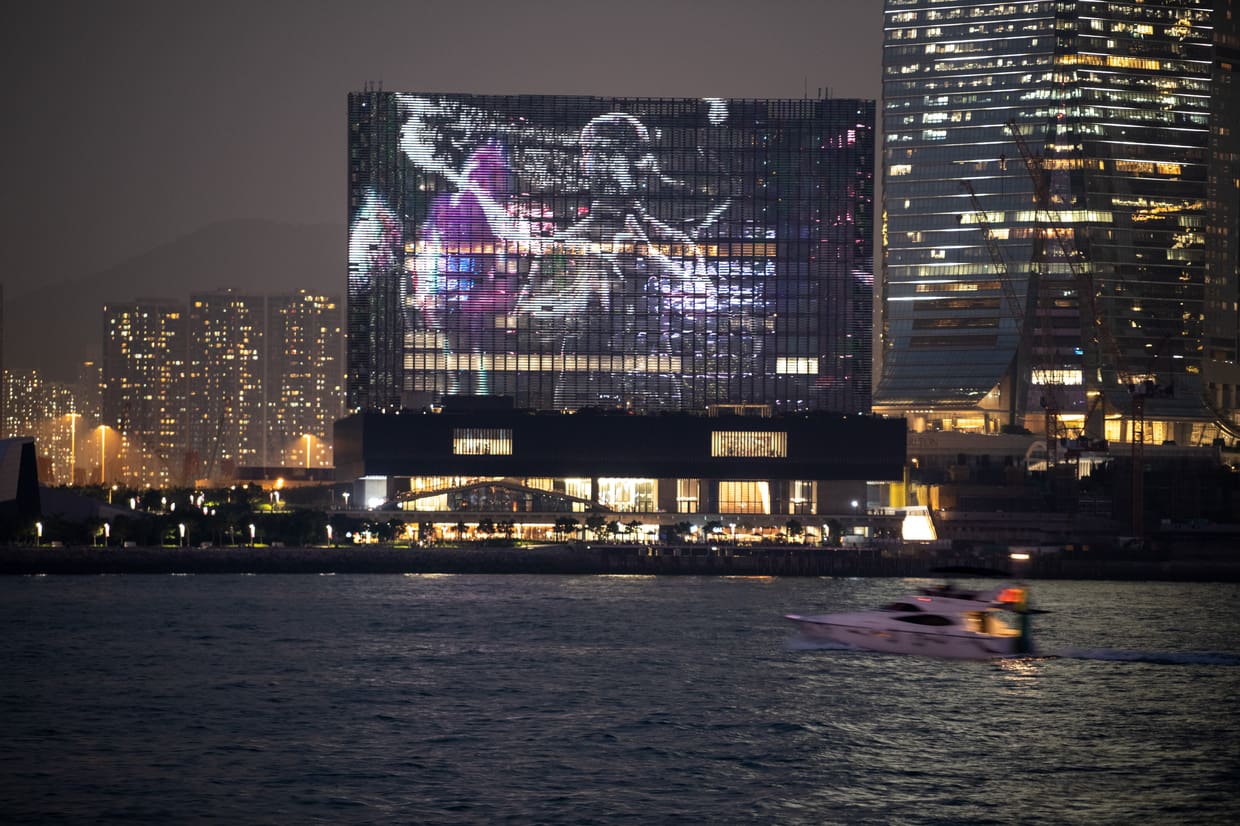Hong Kong Art Basel 2022, courtesy of Hong Kong Art Basel
Hong Kong Art Basel 2022, courtesy of Hong Kong Art Basel
Serendipitously, with Hong Kong now wholeheartedly welcoming visitors, the city plays host yet again to its premier international contemporary art fair—Art Basel Hong Kong. With an ambitious full-scale lineup of 177 galleries from 32 countries and territories, it’s the biggest show since 2019 and the excitement leading up to the extravaganza is palpable. The fair will be held this year from March 23 to 25, with preview days on March 21 and 22, at the Hong Kong Convention and Exhibition Center (HKCEC).
Expect to see paintings from the likes of Pierre-August Renoir and Yayoi Kusama, and sculptures by Belgian designer Martin Margiela, alongside works from both established and emerging artists. Encounters, the section for large-scale artwork, is also returning, under the helm of curator Alexie Glass-Kantor.
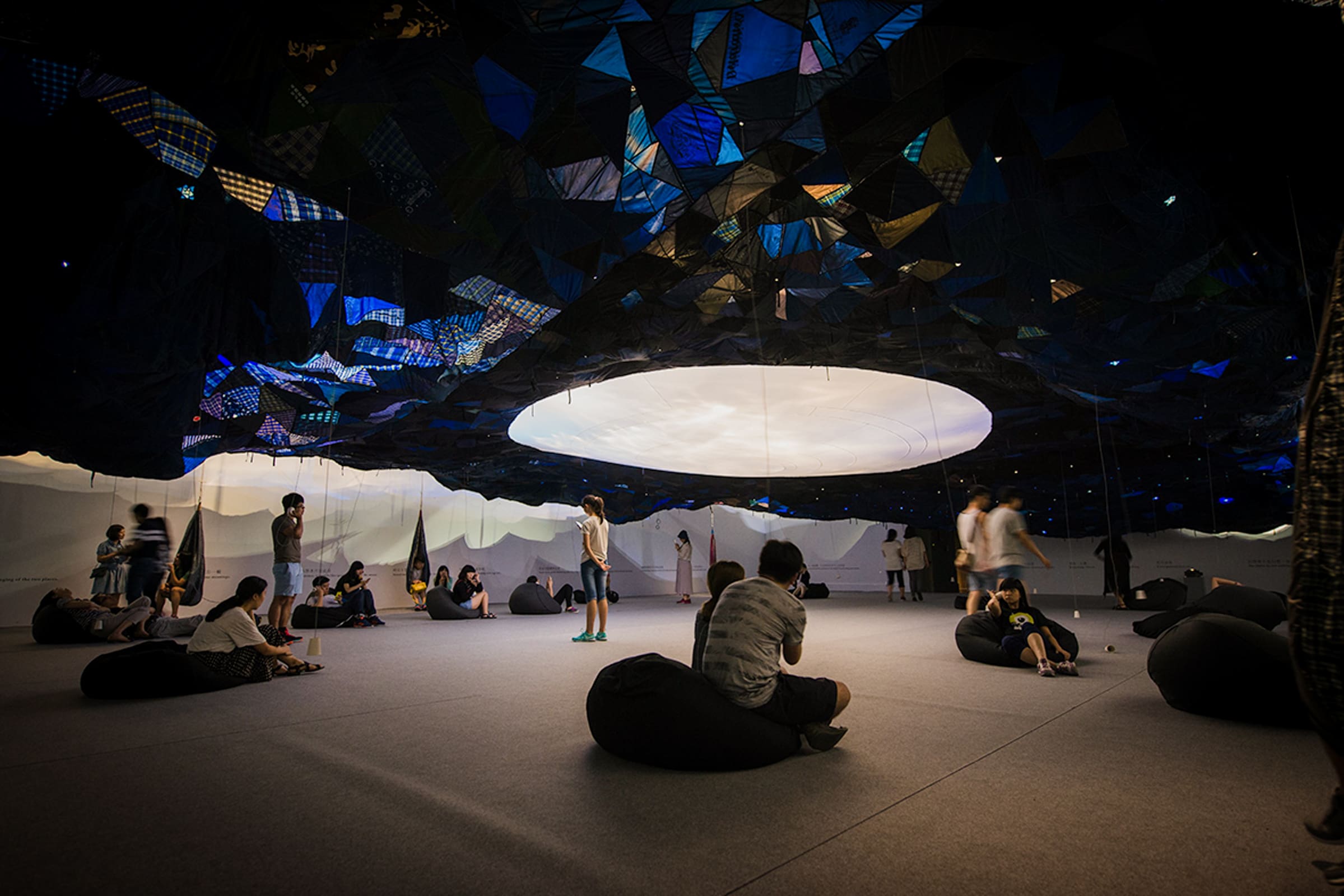
Angelle Siyang-Le, Director of Art Basel Hong Kong, is looking forward to everyone coming together again for this landmark event. “Aside from enjoying themselves, [I hope people] really make meaningful connections during the week, and bring something back to where they came from. Adeline Ooi, Art Basel’s Director Asia, who is in charge of overseeing the organization’s projects in the region, is equally excited.
On the cusp of this much-awaited reunion for the art world’s cognoscenti, Vogue Philippines speaks to its curators on what the creative set can look forward to.
Angelle Siyang-Le on the Power of Community
Coming off of a a whirlwind tour around Asia, Art Basel Hong Kong’s Director Angelle Siyang-Le is busy finalizing arrangements for the fair, making sure it happens in record time.
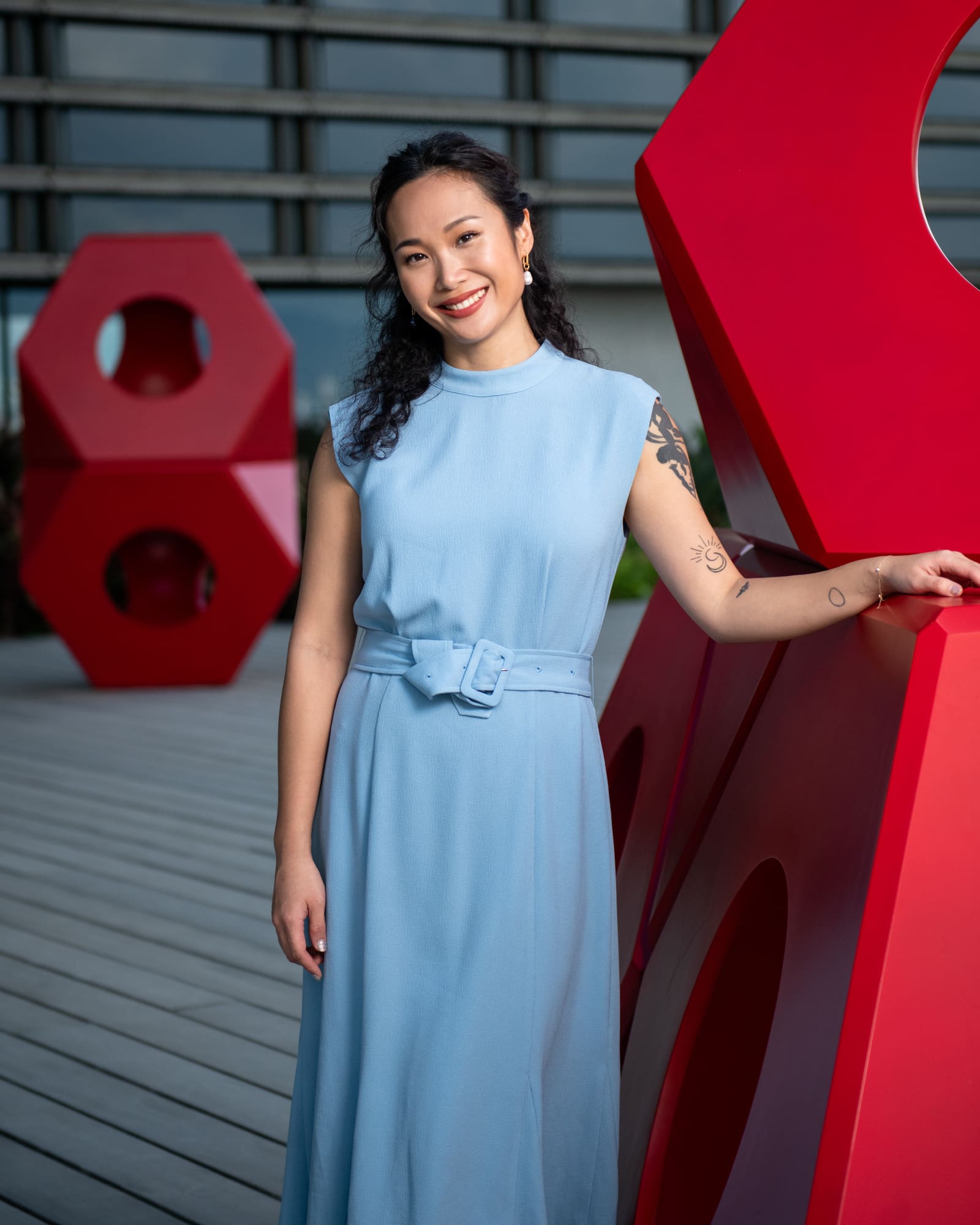
The anticipation is more intense now that the fair is returning to an in-person experience, having come from digital and hybrid set-ups. “This is the first year that we could reopen the border to anyone outside of Hong Kong, so all the special sectors are back. All the galleries are turning up in person,” she shares.
The fair attracts a wide range of visitors, from art lovers to big-name artists and globe-trotting VIPs. “A lot of celebrities are collectors, so you don’t know who you are going to see, that’s also part of the excitement,” Siyang-Le declares.
The fair’s large-scale installation sector has also returned, as well as its film screenings, and its thematic presentations. A bevy of panel discussions, conducted by leading figures in the industry will also be part of the program. “We invited more than 80 speakers, including art world professionals, curators, gallerists, and also collectors. We provide this platform, to really get people to exchange ideas, and have conversations,” Siyang-Le shares.
And while the almost week-long extravaganza carries with it a lot of cultural and artistic significance, the commercial aspect is also getting a lot of buzz. According to Siyang-Le, the first two hours of the show are really the most intense, with collectors rushing to get in as the doors open. “These collectors, a lot of them know exactly where they are going to go, who they are going to see. They probably have pre-arranged appointments on-site,” she explains. “But you’re not the only person who is going to inquire about this particular work by this artist. So, you want to make sure you’re there to show the galleries your dedication.”
With so many of the art already spoken for even on the first preview day, Siyang-Le shares that galleries often do re-hangs to showcase new art. “If you come to the show on day 1, and then you come to the show on day 4, it could look like completely different booths,” she declares, making the fair even more dynamic.

She sees the annual exhibit ultimately as an international platform that brings different sectors of the art world together in a meaningful way. “I am a very community-oriented person,” Siyang-Le shares. “I think community heals people. And art is an element that really glues the community together, as we all share this one passion.”
“And we are not only keeping the community together, but we are also expanding it. Our show is already a bridge between the East and West. But at the same time, as we recently discovered, we are also building a bridge between the old and thew new,” she continues. Owing to Hong Kong’s rich history, a lot of collectors who used to collected antiquities have now gotten a taste for contemporary art, and vice versa, in a practice called “cross-collecting.”
With more than two-thirds of participating galleries having spaces in Asia, and a lot showcasing Asian art, the fair is committed to fostering the growth of the visual arts of the region. “Firstly, I don’t think we could ever have this success without the support of the community, not only in Hong Kong but also regionally,” Siyang-Le notes. “And this community needs protection and nurturing as well So, we have this role, to really have a more balanced and comprehensive ecosystem in order for the community to continue to grow.”
Alexie Glass-Kantor on Being Present in the Moment
Curating this year’s large-scale artwork sector Encounters for the 6th time is Alexie Glass-Kantor, with the theme “This present, moment”. A prolific tastemaker, Glass-Kantor is likewise the Executive Director of Artspace in Sydney, a part of the Advisory Board for MCAD Manila, and was the curator for the Australian pavilion at the 59th Venice Biennale.
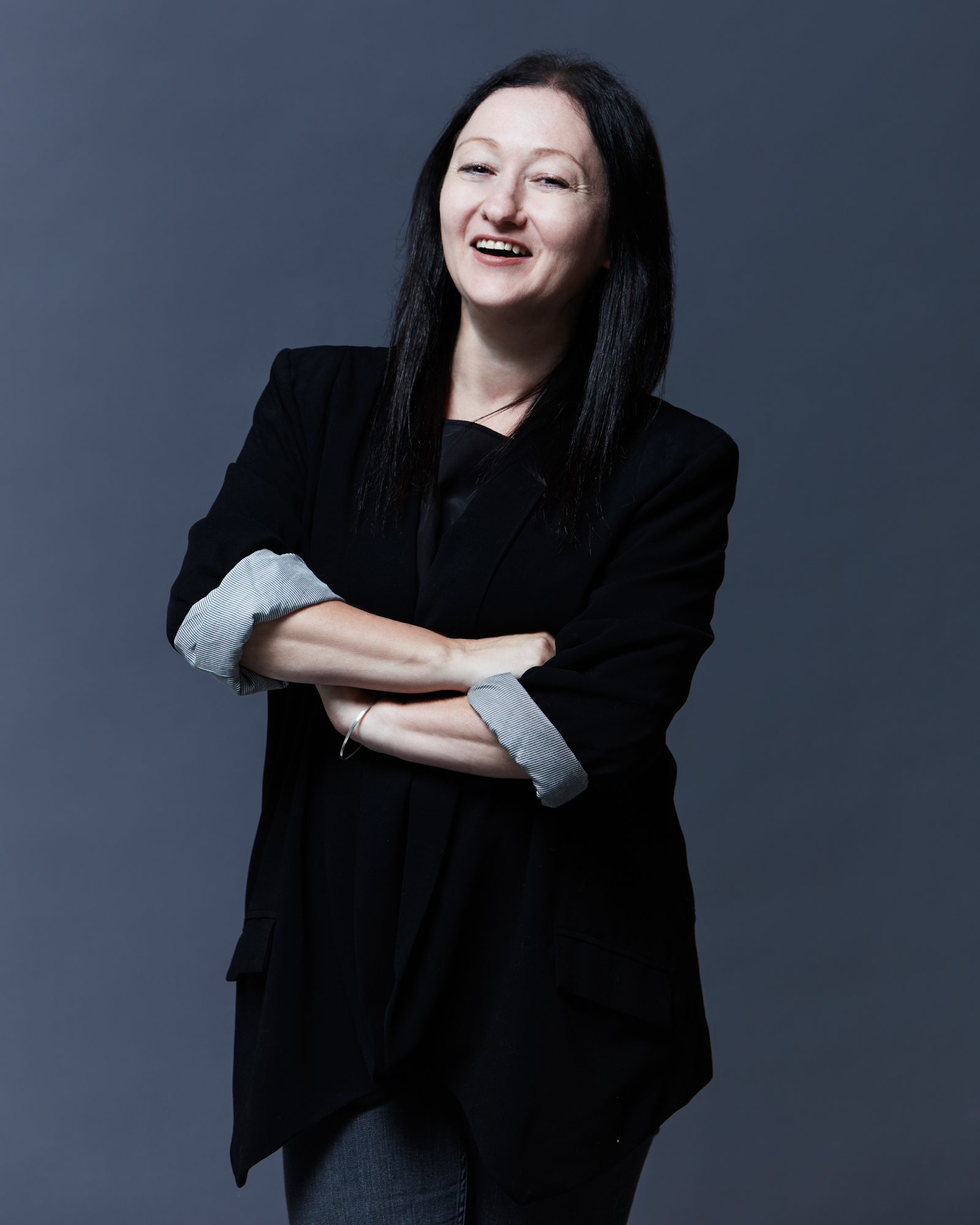
Massive, interactive, and thought-provoking, the artwork according to Glass-Kantor “must amplify this kind of vision and ambition, of ways of new thinking around contemporary art, installations, and sculpture.”
Interspersed along the corridors of the convention center, the art instills a sense of wonder. “I want them to be knitted together, so that as people pass through the architecture of the fair, they have these moments of unexpected reorientation. Of an “encounter” with something they didn’t expect,” she shares.
Aside from the 13 pieces that will be in the HKCEC, this is also the first year wherein Art Basel will be staging one outside the fair grounds. Awol Erizku, the Ethiopian-American artist famously known for his viral image of Beyonce pregnant, will be premiering his giant inflatable King Tutankhamen in Pacific Place. “The show is for everybody. Anyone who walks out of the subway in Central near Wan Chai will have that beautiful moment of the unexpected” says Glass-Kantor.
While curating the show, and cognizant of a complicated global landscape, Glass-Kantor had arrived in Hong Kong last year to find a city that was wide awake. “There were new spaces, new exhibitions, performances, there’s incredible work,” she shares. “I thought, Hong Kong is well and alive. And no one knows the future. All we can do is hold this present moment,” she shares.
Two Hong Kong based artists will be opening the show this year, Jaffa Lam and Trevor Yeung. Yeung, whose installation “Mr. Cuddles Under the Eave” (2021), features 13 money trees, tied together and suspended from the ceiling. First shown in Kiev, Ukraine in 2021, the piece was not able to be deinstalled due to the war, and ended being scattered, and lost. “But this work will be restaged for Art Basel Hong Kong, as Encounter number 1” says Glass-Kantor. “And in a sense that’s how we hold space at a time when we’ve actually been taken apart. So how do we stay together, even when the conditions and circumstances of time seem to be putting us into situations when we can’t be together?”
Artists from around the world, both young and established, will be part of this year’s show. Mella Jaarsma from Indonesia, shall be presenting “The Constructor”(2008-2023), where the artist will stand on the stage on the first day of the fair, and have workers build a structure of bamboo around her, with the artwork expanding every day.
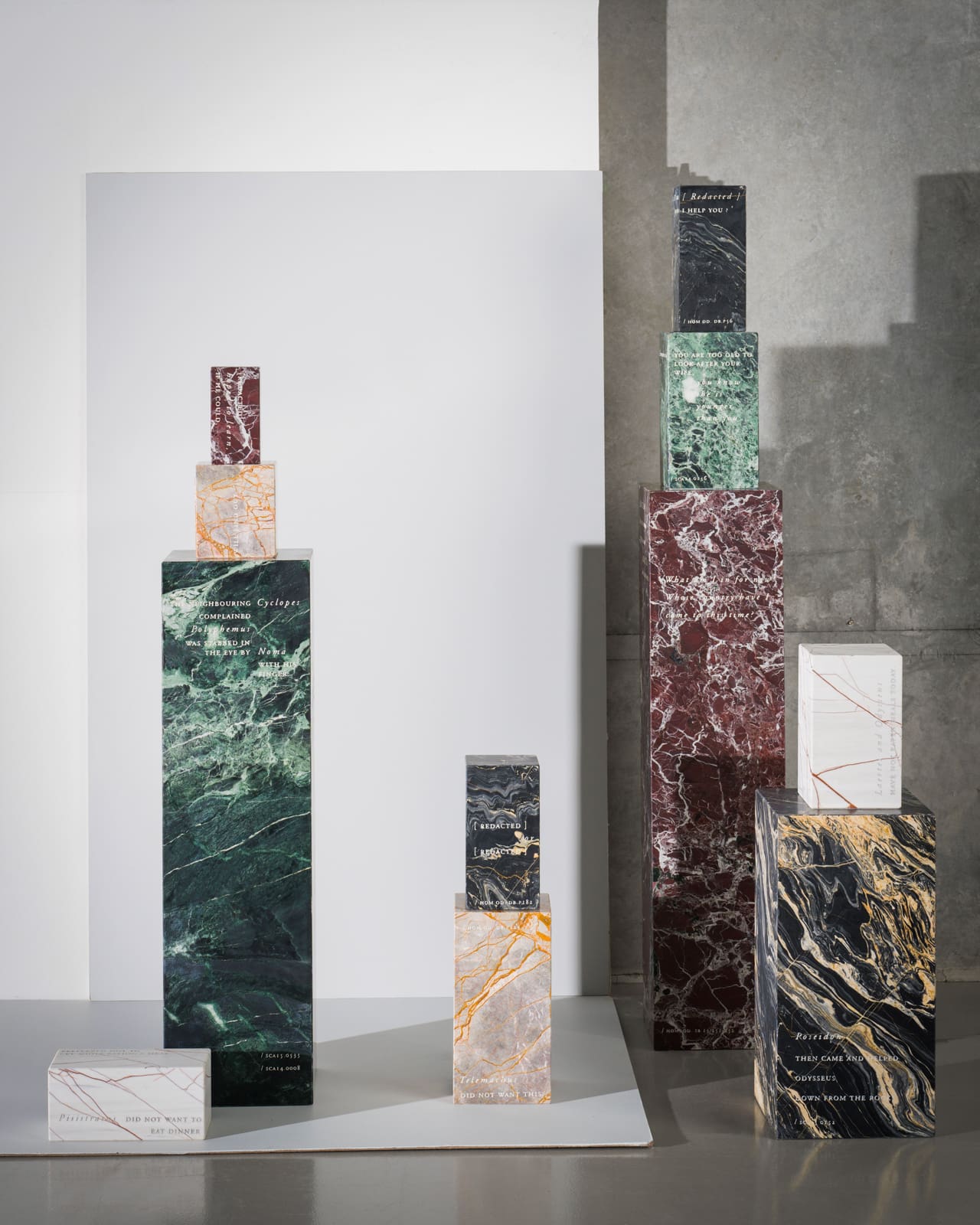

Ukranian artist Stanislava Pinchuck will be presenting a hand-carved marble installation of redacted telegrams of the Australian government, matched with text from Homer’s Odyssey, highlighting the plight of asylum seekers. Hsu Yunghsu from Taiwan will be exhibiting an undulating porcelain masterpiece, where the artist used his fingers to create this wavy archipelago.
“I think what’s beautiful about Encounters this year is about the fact that these works invite the audiences to recognize in them, where the artist is present,” says Glass-Kantor. “And see where the artist’s mark or gesture is taking form. And I think that in this moment in time, when we haven’t seen each other for a while, having that idea of the artist being present is really special.”
Adeline Ooi on Resonances in Culture and the Future of Asian Art
Being the first woman of Asian descent to hold the position of Director Asia for Art Basel, Adeline Ooi is a true trailblazer. Having initially been in charge of overseeing the fair, the organization’s expansion has her taking on a much bigger role as she concentrates on Art Basel’s strategic development in Asia. “I think for us when Art Basel decided to move to Asia it was for real, and we called Hong Kong home. And then we also knew that there was a larger responsibility that we had to this region,” Ooi shares.
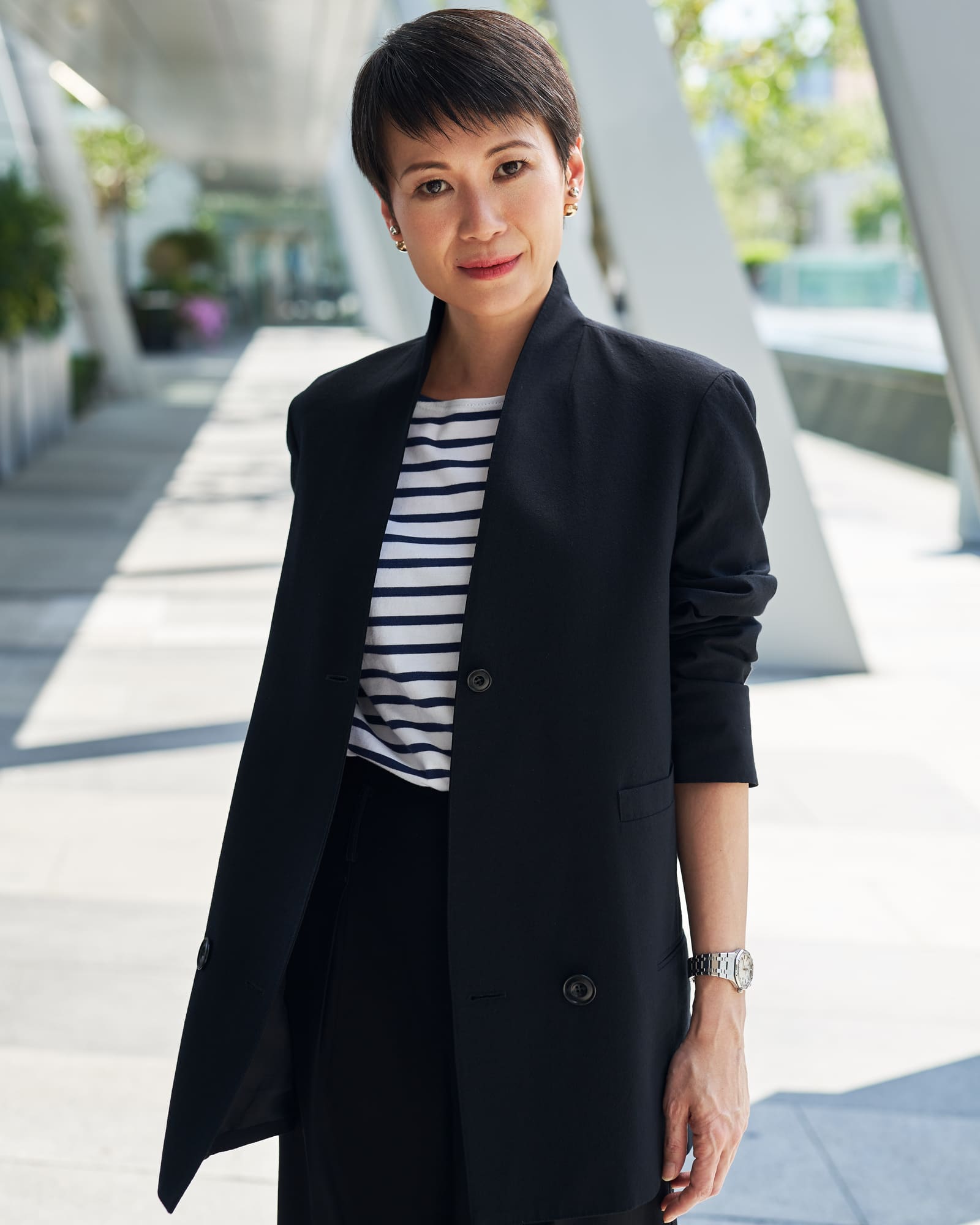
Their most recent initiatives were, of course, partnering with Art Week Tokyo, a vibrant gallery weekend, and S.E.A. Focus, an art fair focused on South East Asia’s histories, geographies, and converging cultures. “In a sense, it was audience development. It’s about, in a cliché kind of way, ‘How can you use your power for good?” she declares. “We thought it’s actually quite meaningful for us to be able to use our communication channels, to share with our audience a different art scene in Asia,” Ooi continues.
“I truly believe in a sense that we all in Asia, our cultures resonate with each other,” Ooi shares. “Just think about language. If I think about Tagalog and the Malay language, there are so many similarities in words. If you think about the food we eat, or if you think about certain things… The family relationship in Asia is more palpable, it’s stronger, the sense of unity.”
“And as a result, people just have a tendency to have so much more in common, much more than we think,” she continues. “And purely on that level, I believe there are so many ways in which we can learn to work together and find strength in numbers.”
The Malaysian-Chinese curator herself is the product of various cultural upbringings, having studied in Singapore and at Central St. Martins in London. She likewise has the fondest memories of her time in Manila, during the time she was working for the gallerist Valentine Willie taking care of a traveling exhibition of Filipino art. Having been awarded the Asian Public Intellectual Fellowship grant after that stint extended her stay, as she her split her time between Indonesia and the Philippines.
Ooi still remembers Tagalog, interjecting her statements with words like grabe and parang, which she learned by hanging around the artists of 8th Avenue in Cubao. She has Kim Atienza to thank for helping her find an apartment in the La Boheme of Malate, the Syquia Apartments, and has even modeled for Robby Carmona. She considers so many Filipino artists as friends, the likes of Geraldine Javier, Yasmine Sison, Maria Taniguchi, Patty Eustaquio, the ladies of Silverlens, and more. “I was there when babies were born, I was there when they got married. It was a real relationship with the community over there,” she shares.
Her time in Manila and the sincere relationships she had cultivated were so deep she claims to often say, “You can take me out of Manila, but you can’t take the Filipino out of me.” She even shares how she would often wear a piece of Bea Valdes jewelry during the opening of the Art Basel fair.
Having been personally privy to the beautiful tapestry of Asian cultures, she recognizes how complex it can be to really encapsulate all of the continent’s unique idiosyncrasies. “It’s like a big onion, that you just have to keep peeling back. So the challenge, which is positive in a way, is how to represent the identities because it’s never just one,” she says.
As to the future of art in Asia, she believes it’s about education. “Not just academic, but also mentorship programming, and things like incubating. Set the path, so to speak,” Ooi maintains. “It’s about ensuring that future generations have what it takes, the tools, the knowledge, to equip themselves and pave their own journey.”
